
Zebra
Zebra
Zebra
Zebras, which are familiar in safari parks and zoos, have stripes and appear in many picture books. In addition, zebra patterns are used in the design of various products. Zebras look very fashionable and elegant, but they are actually quite violent! There are still many secrets about zebras that we think we know. Let’s go find interesting things about zebras.
Zebra Basic Infomation
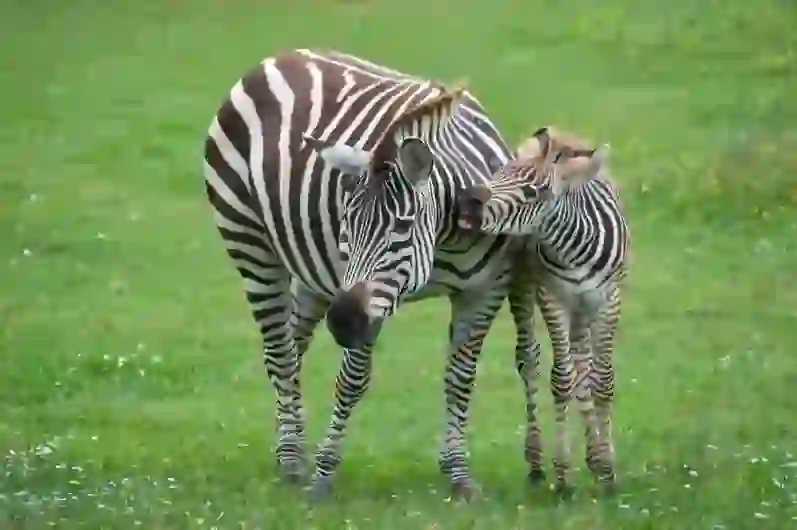
Mammalia-Perissodactyla-Equidae a zebra is a horse that belongs to the Equidae group and has stripes on its body. Scientific name:Equus. English name:Zebra. Height:1.2~2m inside and outside. Length:2~3m. Long tail:40 to 60 cm. Weight:200 to 450kg. Distribution:Eastern and southern africa. Running speed:About 60-65km/h. Lifespan:15-20 years in the wild. It has a large head, thick neck, and an upright mane. Although it is called a zebra, it has many characteristics that are similar to those of a donkey, such as large ears, a tail with a tuft at the end, and its voice. Zebras have a wide field of vision and can quickly spot predators. They also have excellent hearing and can turn their large ears in almost any direction.
Zebra Q&A

What types of zebras are there?
There are three types of zebras. ・Plains Zebra…the stripes extend to the belly. ・Mountain zebraの…have ladder-like patterns on their backs when viewed from above. ・Grevy's Zebra…have many fine stripes.
The subspecies of the mountain zebra are divided into Cape Mountain Zebra and Hartmann’s Mountain Zebra. The subspecies of the plains zebra are divided into Quagga (extinct), Grant’s zebra, Crawshay’s Zebra, Maneless zebra, Chapman’s Zebra, and Burchell’s Zebra. Chapman’s Zebra has thin shadow stripes between the stripes.

What is the origin of the name zebra?
Although it is called “zebra” in English, it is actually called “shimauma” in Japanese. This is because the Japanese word for stripe is “shima” or “shimamoyou,” and as the name suggests, zebras have stripes all over their bodies. Plains zebras live in herb-dominated plains called savannas, while mountain zebras live in grasslands in mountainous areas. Grevy’s zebra has an interesting name origin. In 1882, a zebra that was different from the previously known zebras was presented to then-French President Jules Grévy, and it was named after the president.
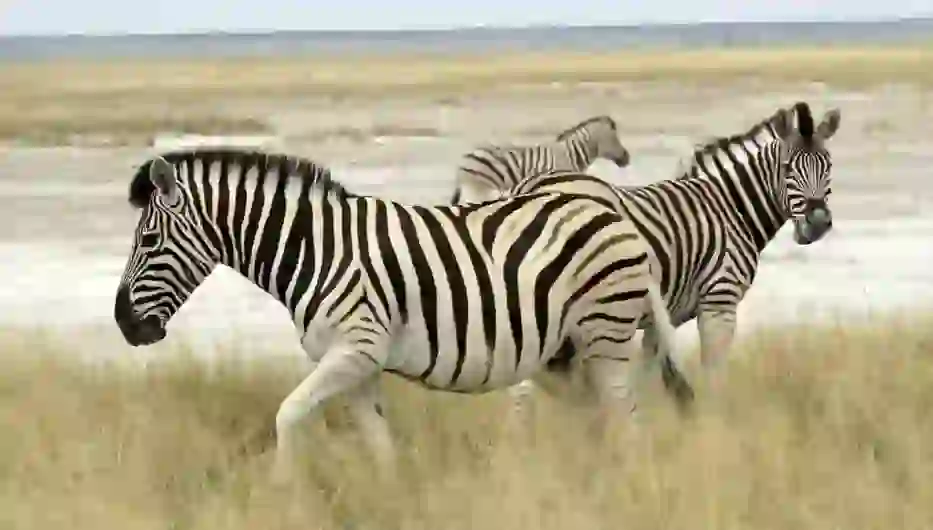
Where do zebras live?
Plains zebras live in the savannas (grasslands) of Africa, while mountain zebras live mainly in the highlands (mountains), grasslands, and plains of South Africa. Grevy’s zebras live in southern Ethiopia and northern Kenya. Grevy’s zebras were once found in Somalia and Sudan as well, but are now considered extinct there and are only found in southern Ethiopia and northern Kenya.
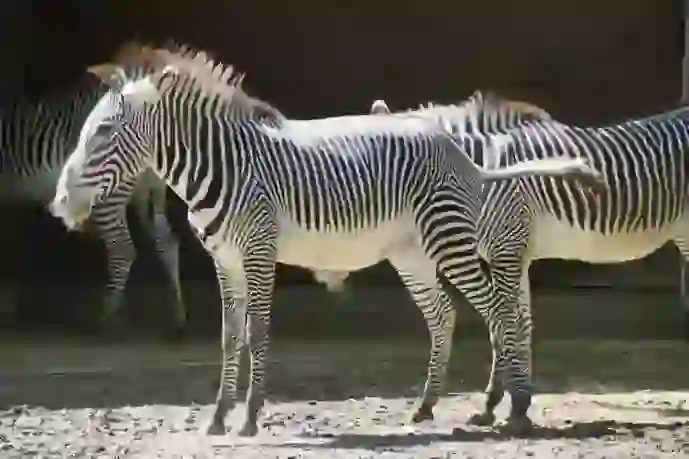
How do zebras live?
Zebras form herds led by males. In Africa, the location of food and water changes depending on the season. When the dry season begins, many herds of about 2 million wildebeests, hundreds of thousands of zebras, gazelles, elands, and other animals merge into giant herds and move in search of rain. This great migration is fraught with danger. On land, carnivores such as lions, cheetahs, and hyenas lie in wait for them. During the migration, they also cross rivers inhabited by Nile crocodiles, the world’s largest reptiles. Some zebras are swept away by the rapids or attacked by crocodiles and die in the river before reaching land.
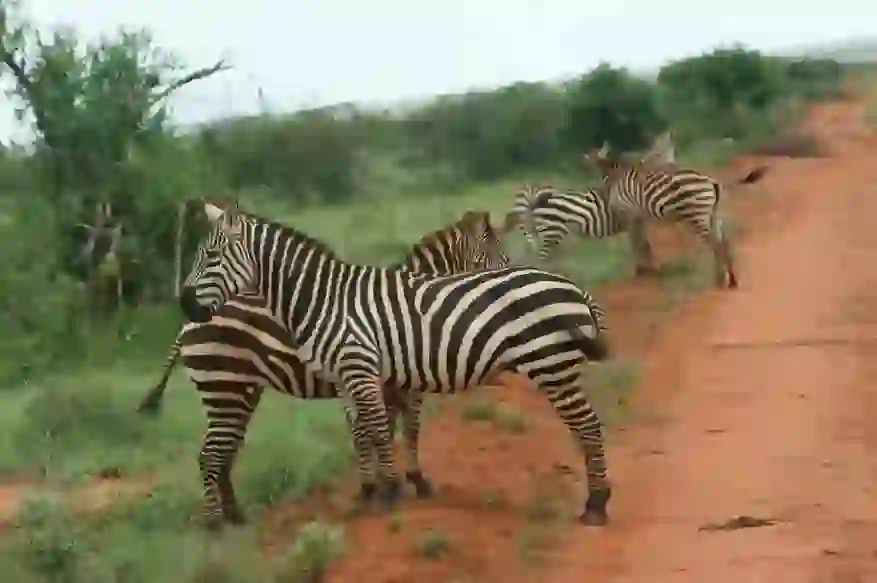
What is the zebra's weapon? How to fight the enemy?
When zebras encounter enemies, there are two ways to survive! Run away or fight. Zebras are cowardly and nervous, but they can also be very brave and fight to the death while injured. The zebra’s greatest weapon is its “kick from behind.” With its powerful kicking force, it can inflict damage on lions and repel them.
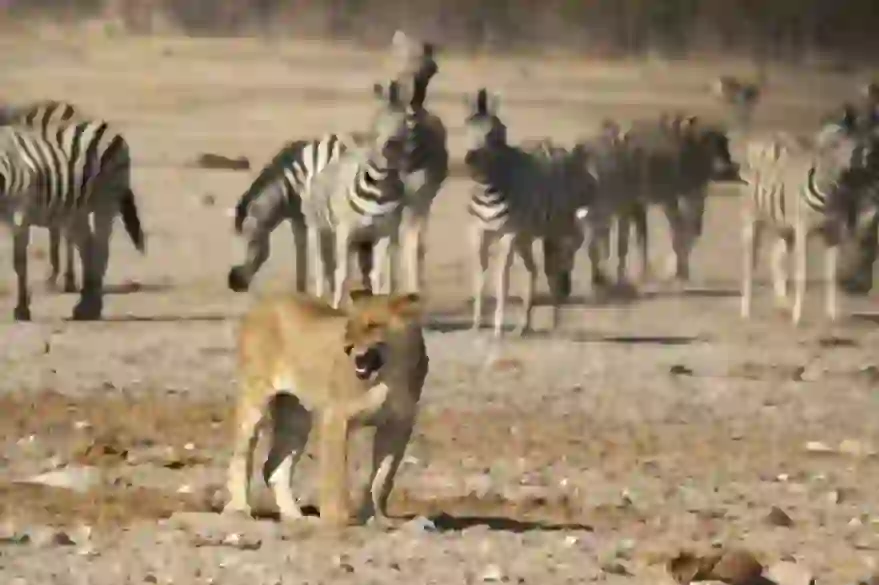
What about zebra families and parenting?
Zebras form families with one male and several females and their children. The gestation period of a zebra is about a year, and the female gives birth to only one child at a time. The child can stand up immediately after birth. Child-rearing is the mother’s responsibility. Zebras lightly bite each other’s skin with their teeth and pull it while grooming each other in their families or herds. This is to keep the skin clean by removing flies and fleas and to communicate with their fellow herd members.
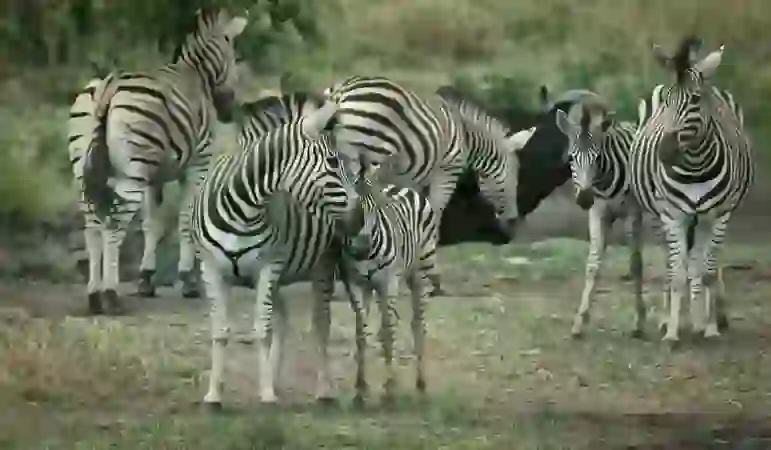
What do zebras eat?
Wild zebras mainly eat plants of the grass family, but they also eat fruits and twigs. Zebras have a soft, mobile mouth and good upper and lower teeth alignment, so they can eat even tough grass.

How do zebras digest grass?
Ungulates that live on grass use “intestinal bacteria” to digest tough leaves. They cannot break down the cellulose in grass themselves, so they house bacteria that break down cellulose in their bodies. However, the location where bacteria live differs between ungulates such as cows and sheep (Artiodactyl) and horses and zebras (Perissodactyla). Artiodactyls house bacteria in their stomachs, while Perissodactyla house bacteria in their long cecum to break down cellulose and absorb nutrients.
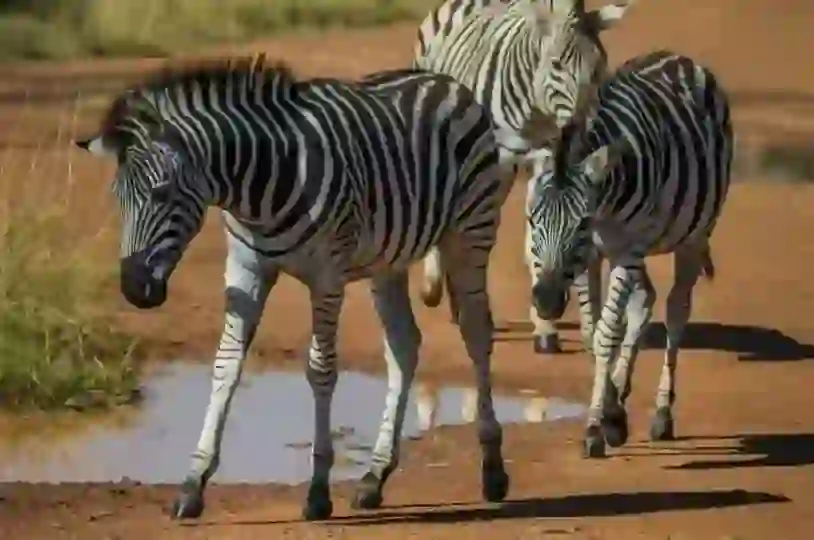
Is it true that zebras sleep standing up?
Yes, that’s true. If zebras lie down for a long time and sleep, they can’t burp the gas produced by bacteria, such as carbon dioxide and methane, and are at risk of death. Also, standing up to sleep has the advantage of being able to escape quickly when targeted by enemies. Zebras sleep less than other animals, sleeping only about 2 hours a day.
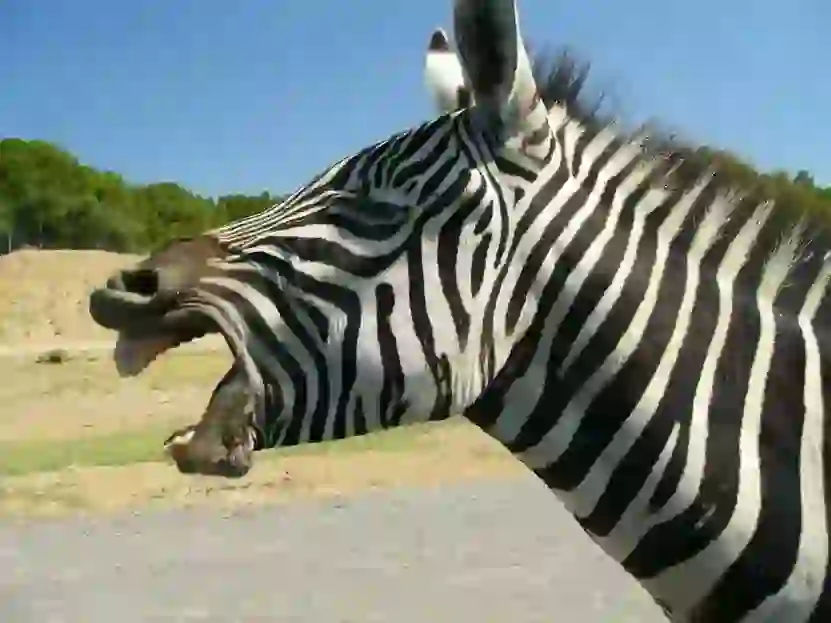
What is Perissodactyla to which zebras belong?
Odd-toed ungulates are animals with one finger surrounded by a strong hoof, such as horses, rhinos, and tapirs. The ancestors of horses had five fingers, but they evolved into one finger to run as fast as possible when escaping from predators. It is believed that the other fingers degenerated or fused with the third finger, which corresponds to the middle finger. The fusion theory is more likely than the degeneration theory.
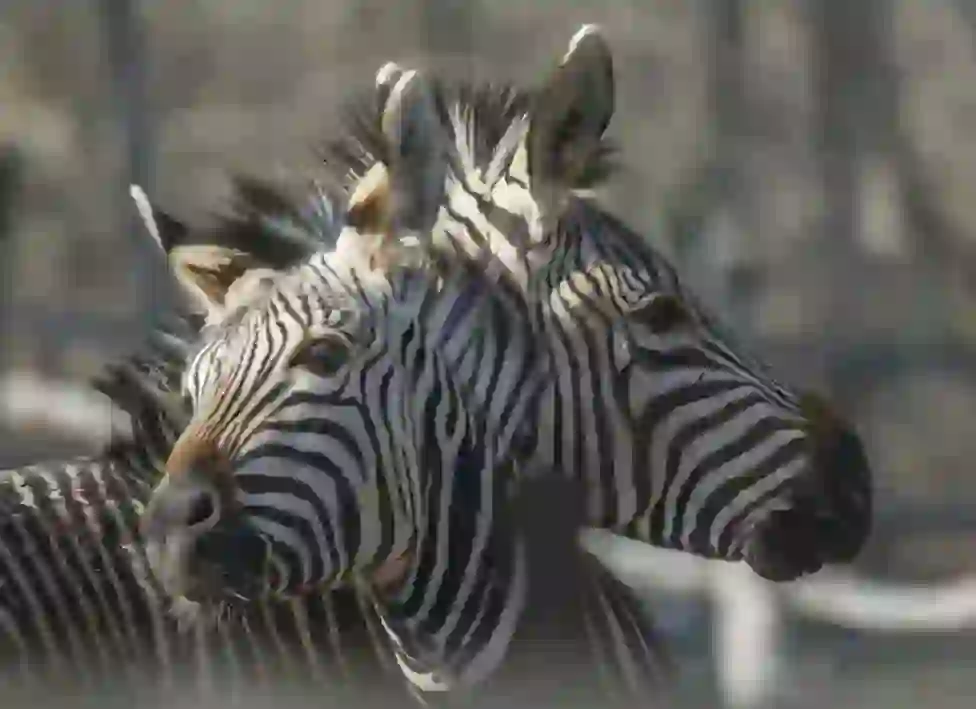
What kind of voice does a zebra call?
The sound of a horse’s neigh is heard as “neigh,” but the sound of a zebra’s neigh is often heard as “woof woof” or “vafu vafu,” and surprisingly, it sounds like a dog.
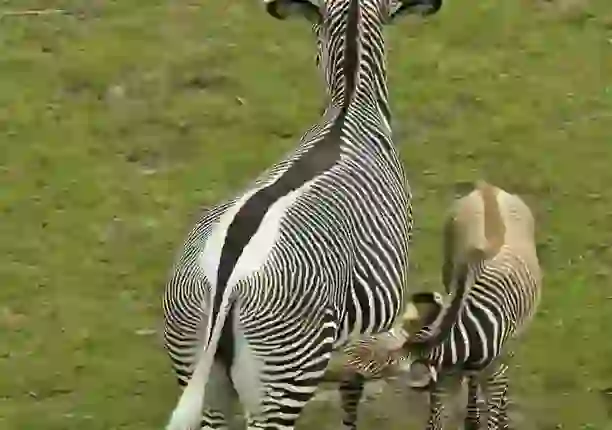
Do zebras also stripe the skin under their hair?
No, the skin of a zebra is black. However, the skin of a tiger or snow leopard has the same pattern as its fur.

Do zebras all have the same stripes?
No. The three species of zs, the plains zebra, mountain zebra, and Grevy’s zebra, each have their own characteristics, such as stripes of varying widths, stripes with light-colored stripes between them, and stripes that extend to the tips of their legs. Even within the same subspecies, each individual is subtly different.
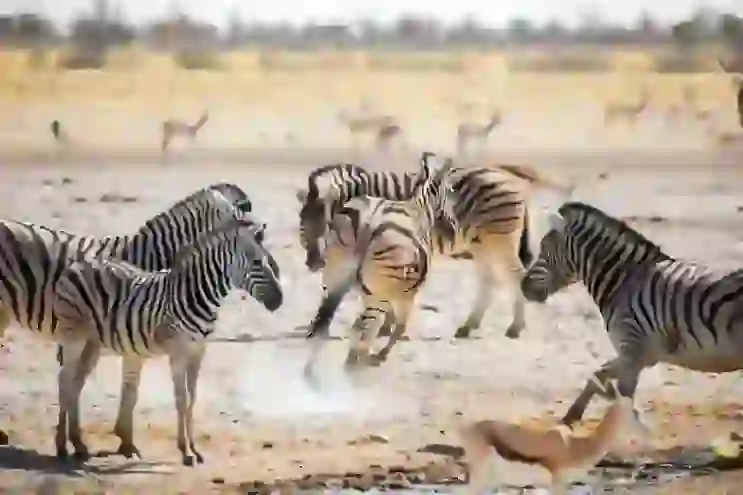
What are stripes for?
The mystery of why zebras have stripes has long been debated among scientists and biologists, sparked by Charles Darwin and Alfred Russel Wallace. Among their considerations, five hypotheses have been proposed for the reason why zebras have stripes: ①to keep insects away ②to use optical illusions for camouflage ③to confuse predators ④to regulate body temperature ⑤for individual identification.
The most plausible hypothesis at present is that the stripes are to prevent harm from parasitic flies, which was proposed by a research team at the University of California, Davis in 2012. The habitat of zebras is home to tsetse flies that transmit sleeping sickness. Experiments have shown that zebra blood is hardly detected from tsetse flies and that they avoid striped areas. Furthermore, it has been found that sleeping sickness, which is confirmed in many equids, is hardly seen in zebras. From these findings, it is suggested that stripes were acquired to protect against blood-sucking flies.
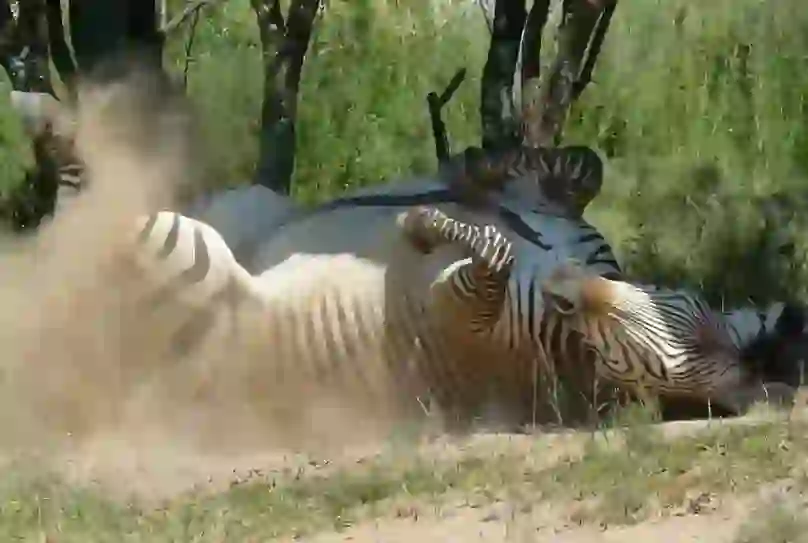
Can zebras be livestock and pets?
No, zebras are temperamental and nervous and do not easily become attached to humans. There are two theories as to why zebras have become temperamental: ①In Africa, zebras have long been hunted as food, so they have developed a strong sense of caution towards humans. ②They have acquired aggressive behavior to protect themselves from strong natural enemies such as lions and hyenas. However, it is not clear which theory is correct.
Humans have been trying to domesticate zebras since ancient times, but while a few individuals were domesticated, most attempts failed.

Can you ride a zebra?
No, unfortunately you cannot ride a zebra. Some zebras are specially trained to carry humans in circuses, but zebras are temperamental and nervous, and their spines are not as sturdy as horses’, so they cannot carry people or luggage.

What kind of zebra is the extinct quagga?
The quagga lived furthest south among the plains Zebras. It was about 135 cm tall and had no stripes on the back half of its body, being brown all over. Its legs and their roots were a whitish cream color, and its teeth and ears were small, with characteristics common to horses. However, these characteristics were not expressed by crossbreeding with horses but were unique to quaggas. The quagga became extinct due to overhunting by humans and the reduction of its habitat due to development. The last wild quagga was shot in 1861, and the last quagga in captivity at the Amsterdam Zoo died in 1883. Later, after DNA analysis revealed that the quagga is a subspecies of plains zebra, the "Quagga Project" was launched in 1986 to revive the quagga through crossbreeding, and in 1988, an individual with a pattern similar to the quagga was born. Subsequently, plains zebras with quagga-like patterns were named "Rau quagga," and their numbers continue to increase.

Would you like to become a part of the 'Animalbook.jp'?
Turn your knowledge into Q&A and share it with the world. ※Publication will be activated after purchase. Let's share information together!
Zebra Type of List
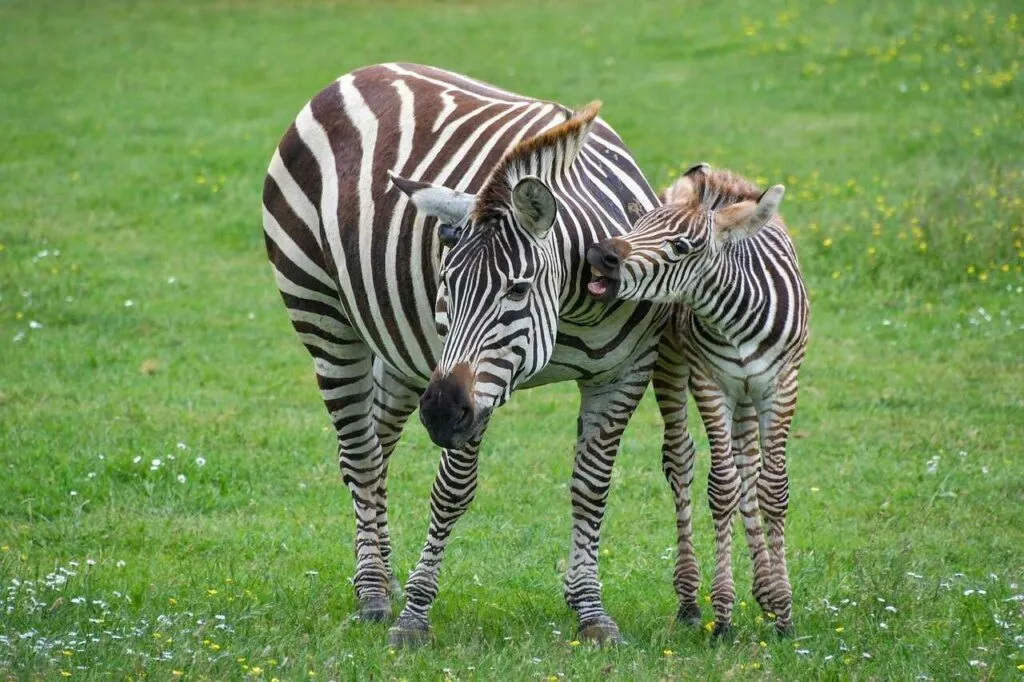
Plains Zebra. ・Maneless zebra. ・Grant's zebra. ・Crawshay's zebra. ・Chapman's zebra. ・Burchell's zebra. ・Quagga(extinction). Mountain zebra. ・Cape mountain zebra. ・Hartmann's zebra. Grevy's Zebra.
Information
Congratulations! You are the first commenter!

Create Your Favorite List!
Zebra
Save the animals you love! Build your own list to quickly revisit your favorites later.

Would you like to leave a comment?
※Please note: This is for the purchase of rights to post comments within the article.
Find Your Favorites!
Our shop offers a unique and attractive selection of goods themed around various animals.
Zebra References

- ウィキペディア https://ja.wikipedia.org/wiki/シマウマ
- ナショナルジオグラフィック・動物大図鑑 https://natgeo.nikkeibp.co.jp/nng/web/animals/
- ナショナルジオグラフィック・News https://natgeo.nikkeibp.co.jp/atcl/news/17/030700082/
- 動物図鑑 https://amaru.me/animal/equus-zebra/
- いきものNAVI https://livingthing.biz/archives/5406
- コトバンク https://kotobank.jp/word/シマウマ-75105
- 歯の不思議博物館 http://okazaki8020.sakura.ne.jp/omosiro/hun/hun.html
- にほんまつ動物病院 https://nihon.matsu.net/nf_folder/nf_mametisiki/nf_animal/nf_animal_kiteirui_guuteirui.html
- 雑学.com https://kerokero-info.com/2016/02/12/post-688/
- AFP BB NEWS https://www.afpbb.com/articles/-/3159870
- ガラパイア Private Zoo Garden ごりぶろ/シマウマの種類一覧:模様や特徴、見分け方 ブラックな生き物図鑑 朝日新聞出版 http://karapaia.com/archives/52159003.html
Zebra Introduction of media used
出典:https://www.pexels.com/ja-jp/photo/6168935/
出典:https://www.pexels.com/ja-jp/photo/5146632/

出典:https://pixabay.com/images/id-3475470/

出典:https://pixabay.com/images/id-5534011/

出典:https://pixabay.com/images/id-4907290/

出典:https://pixabay.com/images/id-424442/

出典:https://pixabay.com/images/id-914363/

出典:https://pixabay.com/images/id-1628421/

出典:https://pixabay.com/images/id-2791965/

出典:https://pixabay.com/images/id-1068638/

出典:https://www.pexels.com/ja-jp/photo/3-2118645/

出典:https://pixabay.com/images/id-1378368/

出典:https://pixabay.com/images/id-4864060/

出典:https://pixabay.com/images/id-169805/

出典:https://pixabay.com/images/id-2048671/

出典:https://pixabay.com/images/id-5015976/

出典:https://pixabay.com/images/id-4979653/

Help Enrich Our Animalbook.jp with Your Media!
We are constantly looking to expand and enrich our Animalbook.jp with amazing photos and videos of animals. If you have any media that you'd like to share, please contribute and help us showcase the beauty and diversity of the animal kingdom. Your submissions will be credited and featured in our encyclopedia, reaching a wide audience of animal lovers.


















